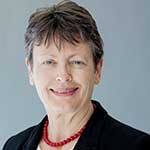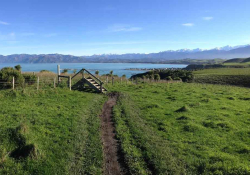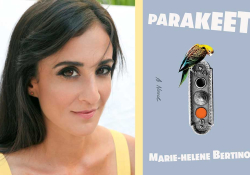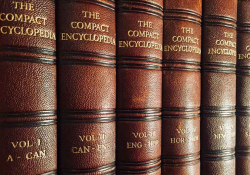Mission Rocío: From Quito to Paris and Guadalajara, Saving the Earth One Poem at a Time
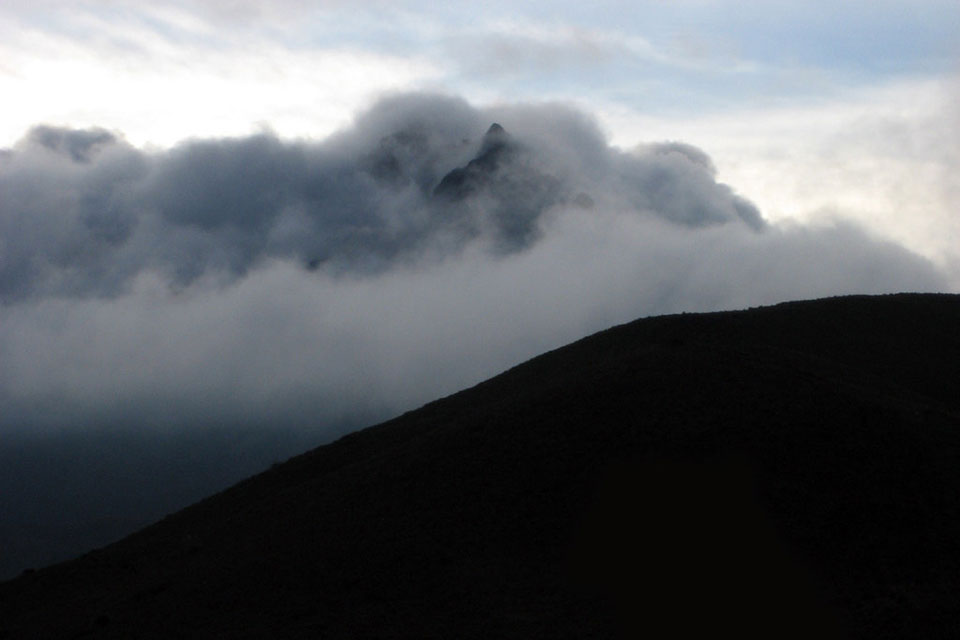
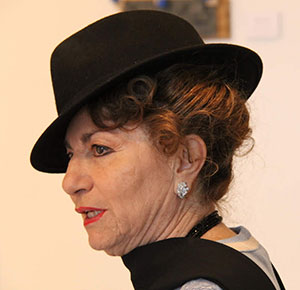
Rocío Durán-Barba is one of the most important voices of Latin American literature today. The author of more than fifty books in French, Spanish, and many other translations, she writes in a surrealistic vein tethered to history. Fundamentally awake to her surroundings, she fully engages her senses, mind, and spirit in a reading of the present to better guide the future. Whether she questions the identity of Paris, explains the world events of May 1968, or challenges Henri Michaux’s travelogue of Ecuador, she is always awakening her readers’ consciousness.
Two of her recent works encourage introspection and dialogue with the cultures of Spanish Latin America in the form of encounters between painters and poets. Neither illustrated poems nor narrated paintings, these encounters are artistic regards croisés. Translation is present as a third art, as the books feature the French and Spanish versions of the poems. A first volume matching twelve Ecuadorian painters with twelve French poets, Regards croisés. Miradas cruzadas. Peintres équatoriens et poètes français, came out in 2016. This desire to make Ecuador better known to the world may have its roots in the devastatingly negative travel impressions noted by Henri Michaux during his trip to Latin America in the late 1930s. Durán-Barba responded to it first with Ecuador. El velo se levanta (2007), followed by the French version, Équateur (2016). Whether acquainted with Andean cultures or not, readers experience intuitively the pure pleasure of all the senses amid a profusion of colors and sounds and stories; these evocations of the Ecuadorian land reawaken spiritual connections buried deep within the soul.
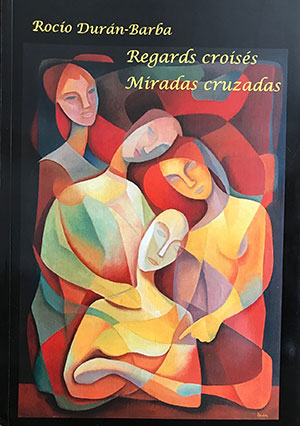 A second volume, Regards croisés en France. Poésie et peinture, followed in 2018. It pairs fifteen French painters with fifteen French poets, including Durán-Barba. All the poets are women; some are French-born and some are naturalized French citizens. All have lifelong cross-cultural experiences. Here, the regards croisés method reveals France’s growing multiethnicity, the outreach of francophonie, and the enduring attraction of France for many artists. Durán-Barba chose the poets and painters based on their world awareness, their willingness to dialogue with another artistic medium, and their readiness to represent experience through the language of their native earth. In an age when saving the earth seems to be a ubiquitous topic, Regards croisés en France is a paean to the earth, a record of its cultural history affirmed as a feminine principle. The fecundity of this approach is seen in the exhibit Durán-Barba organized to launch the publication of Regards croisés in France. Twelve Ecuadorian painters featured in the book were exhibited at the Galerie Véronique de Guitarre in Paris, including Antonio Seguí, whose painting graces the book cover. Thus temporary and permanent artistic expression, direct and indirect contact with art, complemented each other in new ways.
A second volume, Regards croisés en France. Poésie et peinture, followed in 2018. It pairs fifteen French painters with fifteen French poets, including Durán-Barba. All the poets are women; some are French-born and some are naturalized French citizens. All have lifelong cross-cultural experiences. Here, the regards croisés method reveals France’s growing multiethnicity, the outreach of francophonie, and the enduring attraction of France for many artists. Durán-Barba chose the poets and painters based on their world awareness, their willingness to dialogue with another artistic medium, and their readiness to represent experience through the language of their native earth. In an age when saving the earth seems to be a ubiquitous topic, Regards croisés en France is a paean to the earth, a record of its cultural history affirmed as a feminine principle. The fecundity of this approach is seen in the exhibit Durán-Barba organized to launch the publication of Regards croisés in France. Twelve Ecuadorian painters featured in the book were exhibited at the Galerie Véronique de Guitarre in Paris, including Antonio Seguí, whose painting graces the book cover. Thus temporary and permanent artistic expression, direct and indirect contact with art, complemented each other in new ways.
Rocío Durán-Barba has long paired text and artwork in “catalogs” or artist’s books. In fact, this method began with her painting entitled Pachamama, which exemplifies her concern for the environment and her love for the Andean region of Latin America. Durán-Barba composed a first painting in black ink in Vienna when she was twenty-five as an anguished reflection on the geographic equator’s plurilingual and fragmented realities. An invocation to the earth/time Mother, the painting, measuring approximately twenty-eight by twenty inches, was exhibited several times. In 2004 Durán-Barba added color touches: white multilingual ribbons of words streaming free from the painting’s original frame; windblown flowers escaping to the edges, while the black central landscape was enriched by touches of watercolor and light. In 2014 a third version of the painting was finished. Now measuring approximately forty by forty inches, the canvas is significantly larger. The initial central bleak outlook for the earth is lightened by outward-bound bougainvillea petals in a pale pink flight that represents both the eternal spring of the equatorial regions and hope for rebirth. Pajonales bring silence, condors, and fog of the high Andean plateaus to the undergrowth, re-creating a mystery that protects deities and shamans.
Durán-Barba’s recent works encourage introspection and dialogue with the cultures of Spanish Latin America in the form of encounters between painters and poets.

The finished painting was displayed for the first time at Espace Cardin in 2014 in Paris. The catalog book featured the first bilingual version of the poem “Pachamama,” with the Spanish and French texts written by the poet. Ten exhibits followed, with a second printing of the poem. A new version of the book was published in time for the June 2019 UNESCO celebration of Latin American native languages in Paris. A Quechua translation of the poem prepared by Victor Hugo Vásquez Suáres was added as well as ink illustrations by Rocío Durán-Barba. A mountain woman, Rocío Durán-Barba finds her inspiration in these sober landscapes to which she often returns. Over the years, “Pachamama” became a rallying cry of protest against ecological abuse, a warning to humans to not take from the earth more than it can give. At the same time, it is a paean to the Andes, matrix of the benevolent World goddess to whom humans need to return in order to be purified.
Staying with environmental concerns, Une voix me le dit, which received the 2017 Prix des Arts littéraires – Prix de la ville de Saint-Orens, is a timeless incantation about saving the world. Each poem has the shape of a square; it is a closed space with a “trailer” at the bottom, in the form of three mystery-carrying adjectives, one of which is “strange.” Une voix me le dit features shamans and antique deities who might save the world from destruction and hatred. This is a rejection of the Cartesian, linear, analytical thought-process. Using shamanic rituals of personal and communal spiritual experience, the poet urges us to become attuned to the earth. She places herself at the foot of the Cotopaxi, the world’s most dangerous volcano and one of the highest, waiting for it to erupt (it has erupted more than fifty times in the last three hundred years). Through this purification, her body becomes one with the city in all its dark and light counterpoints and with the water in its multiple forms (breath, steam, rain, sleet, snow, the volcano’s hot bubbles). When the “black heart” of hatred is exorcised and the poet is initiated to earth’s mysteries, all her senses are reawakened in a celebration of touch, smell, sight, taste, and sound, allowing a return to the unity of the self. This ritual echoes that found in the last lines of “Pachamama:”
In the attic
of dawn
I will leave
what is incomprehensible
the screams of the present
hatred
extremism
I will leave
the tears of the migrants
the dispossessed
the persecuted
of all those who flee
In the attic
of dawn
I will leave
fear
confusion
chaos
A hairdo of sadness
bolts
and nuts
I will leave
conjuration
charms
my doubts
my chains
my rivets
To return to
the Andean peaks
Pachamama
wakes up
Her hymn
of clay
moves forward
fragmented
The sky repeats the notes
of her Pan flutes
of her wandering drums
Another topic dear to Rocío Durán-Barba’s heart is freedom or, rather, freedoms. She published Parole émancipée in 2017, a series of poems celebrating the grandeur and tragedy of Nelson Mandela. This presentation constitutes a larger-than-nature portrait of the late South African president and of his vision for peace. She followed up with an anthology of South American poetry on the theme of resistance. Resistance poetry is a particular genre, a segue between victimization, anger, and resolution. But here the meaning is broader. In her introduction to the anthology, Durán-Barba writes:
To resist is to live. To defend life. One’s own and others’. To exist, decidedly. To believe in the journey. To sail into the sea. To face the storm. To hoist the sails. To catch the favorable wind. To love.
To resist is to fight. To raise one’s eyes. To breathe in the horizon. To proclaim the light. To dream of the possible-impossible. No never stop. To fight to make what is good the best. To love.
To resist is to persevere. To visit memory and its unspeakable regions. To recover serenity. Eyes. Vision. To rename the days. To overcome human misery. To love.
To resist is to walk. To progress beyond the contrary currents. To conquer the rainbow’s paths. To find the keys of life. To move into the house of tomorrow. Near the embers where the soul blossoms and gets fulfilled. To love.
And for us, who hold the Word in our hands,
To resist is to write. To brandish the Word when imbalance prevails. When the mind weakens. When daily life becomes negative. When the desire for prosperity vanishes. To resist.
To write. When ideals narrow. When hope takes leave. When material satedness is at its peak. When societies suffer from chaos-myopia-depression. To resist.
To write. Unveil the light. To showcase the Word like a lighthouse. To redraw days and nights. To refuse to breathe on the margins of the world. To broaden the word and the vision. To resist.
To write on paths, in the fields. On the foam of the sea. On freedom’s breath. To resist.
“To resist is to write. To brandish the Word when imbalance prevails.”—Rocío Durán-Barba
If resistance against authoritarian regimes, poverty, and corruption is a well-known feature of South American writers, Durán-Barba goes further in the name of the humanistic agenda of democracy and peace. Her anthology departs from earlier ones such as Gérard de Cortanze’s more traditional América libre: Exercice de lectures transformationnelles de la poésie latino-américaine contemporaine (Seghers, 1976) and his Anthologie de poésie latino-américaine (PubliSud, 2014) in significant ways. The anthology features ten living poets from each of fourteen Spanish-speaking Latin American countries selected by their respective PEN Clubs, and ten living French poets chosen by the French PEN Club who have submitted only unpublished work. Thus the anthology is broadly representative of the new voices in Latin American poetry.
The collective aspect of this work underscores its importance in promoting intellectual cooperation and literature as “the transmitter of the tangible and intangible memory of peoples,” in the words of Catherine Amy Dawson Scott, the co-founder of the international PEN Clubs. Promoting the work of the PEN Club is also a way to celebrate France’s influence around the world as well as its affinities with the passion and vitality of Latin American literature. Rocío Durán-Barba asked fifteen PEN-France members to write prefaces for each country and enlisted the help of seven translators to make the anthology bilingual. While not illustrated, the volume features on the cover a lithograph by Durán-Barba herself entitled “Revolution?” The anthology was pre-launched on October 15, 2019, at the Cultural Institute of Mexico in Paris under the aegis of Emmanuel Pierrat, president of the French PEN Club, who contributed the book’s prologue. Assisting in this “coming out” party for Spanish Latin America were Sylvestre Clancier, Claudine Bohl, David Ferré, Philippe Bouret, Claude Ber, and Martha Cerda. Beginning on November 30, 2019, at the international book fair of Guadalajara, the anthology will be launched in each of the participating Latin American countries.
Durán-Barba surrounds herself with artists in a modern-day Abbaye de Thélème without walls and defined by what Goethe named Wahlverwandschaften.
To pursue her life’s missions—promoting francophonie, celebrating the earth, defending humanism—Rocío Durán-Barba has an impressive set of tools. First is her extraordinary energy and organizational power. Second is her ability to lead parallel projects simultaneously and to harness her creative vision along multiple paths. She paints and writes, organizes exhibits, and presents readings and performances. Third is the institutional networks that she has created or cultivated. She created and heads the Rocío Durán-Barba Cultural Foundation, which encompasses the Allpamanda imprint. She serves on many boards, heading, for example, the “Lettres en vol” poetic association. As a member of the executive committee of the PEN Club France, she is responsible for the Latin American section. She is pioneering a new model of artistic production predicated more on artists’ direct collaboration than on the traditional agent/publisher relationship. It gives her more flexibility to structure and time her publications and accompanying literary evenings, performances and exhibits. She thus surrounds herself with artists in a modern-day Abbaye de Thélème without walls and defined by what Goethe named Wahlverwandschaften (elective affinities).
An indefatigable globetrotter, Rocío Durán-Barba plans a poetic trilogy in Spanish about her world travels in which she promises to talk about love, including the love of writing, and about distance and solitude, which are life’s prerequisites of self-reflection.
University of Tennessee at Martin
Selected Works by Rocío Durán-Barba
Résister. Anthologie de poésie latino-américaine / Resistir. Antología poética. Écris de Forge, poésie, and Allpamanda. 2020. ISBN 978-2-9556508-6-8
Pachamama. Allpamanda Editorial, 2019. ISBN 978-2-9556508-5-1
Regards croisés en France. Poésie et peinture. Allpamanda Editorial, 2018. ISBN 978-2-9556508-4-4
Parole émancipée. Paris: Editions Signum, 2017.
Regards croisés / Miradas cruzadas. Peintres équatoriens et poètes français. Allpamanda Editorial, 2016. ISBN 978-2-9556508-1-3
Une voix me le dit. Paris: La Feuille de thé, 2016. ISBN 979-10-94533-04-8
Ecuador. El velo se levanta. Allpamanda, 2007. ISBN 978-9-7731-0-6 Équateur. Allpamanda, 2016.
